Because you really need that last card
Tips For Low-Stakes Poker
I’m no poker pro but here’s a few pointers that might be helpful on your “poker journey” at the low-stakes level:
- Pick premium starting hands
King-2 off-suit (K-2o) is NOT a premium hand in any game! But Ace-King suited (A-Ks) is! I know you’ve seen K-2o hit K-K-2 on the flop and you’d have a full-house, but most of the time that never happens and you’ll lose more playing K-2o than hitting “lightning in a bottle”. - Position is everything
Playing from the Dealer Button is the best position to play a hand since you get to see everyone make decisions before you have to. You can often raise from the button and get many of the “limpers” to fold and steal the pot. Playing from the small blind and big blind positions are the worst positions since you have to make a decision and everyone else gets to see what you do. In general, play stronger hands if you’re closer to the left of the button, play looser hands closer to the right of the button. - Don’t let the Blinds play for free
The small and big blind hands could be very dangerous if you let them limp or check for free. If you let them limp or check for free pre-flop, then there’s 7-4-6 on the flop, how do you know one of them doesn’t have 8-5 that you let them in the hand for free? 8-5 would normally be a folding hand pre-flop, but if you have Q-Q and just called and limped in pre-flop and one of the blinds checked pre-flop for free and hit a straight on the flop, you only have yourself to blame for letting them in for free. Raise pre-flop to make the blinds fold or pay for their hands! Raise at them pre-flop! - Bet and Raise for Information
How else will you know if your hand is any good and how strong are your opponent’s hands? Bet and raise to get information! The experienced players know how to throw you off the trail, but in general you’ll get good information when you bet and raise. Hint: the cheapest bets to get information in Limit Hold’em are the pre-flop and flop bets and raises. - Don’t be a “Calling Station”
There’s a derogatory name for the player who just calls everyone’s bets and raises hoping to catch a card or see if their weak hand holds up at showdown — that player is a “Calling Station”. Also known as “donkey” or “fish” or “donkeyfish”. Calling gives you no information. Calling does not make your opponents fold. There is a time to just call: When you have the nuts or have good odds to catch the nuts and you want to let your opponents keep betting and raising to build the pot and dig their own grave. There’s a few other times to call, maybe if you’re heads-up with a medium hand and the pot is large relative to the call amount. - Fold, Fold, Fold
If someone bets or raises at you… When in doubt about what to do, Fold. If a bluff-raise isn’t going to work, Fold. If you think you’re beat, Fold. If you have to call a bet with 9-high, Fold.
IMO one of the best low-stakes poker books ever written is “Play Poker Like the Pros” by Phil Hellmuth, Jr.
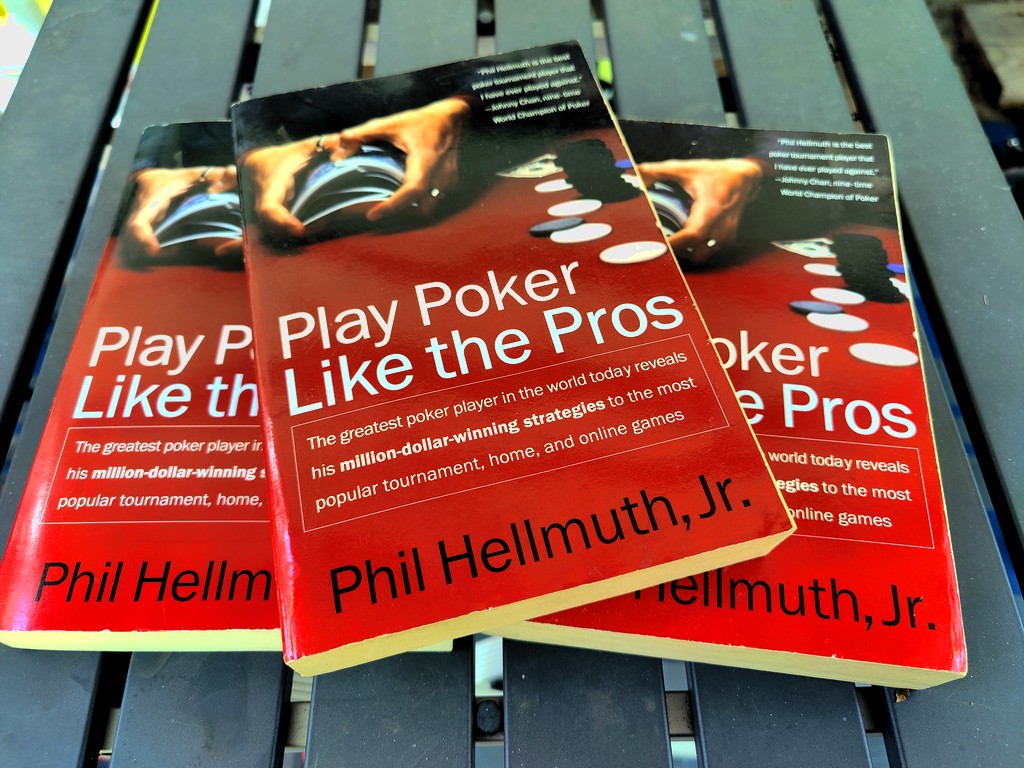
What Poker Stakes Should You Play?

The lower the stakes the more it favors gamblers, and the higher the stakes the more it favors skilled players.
Why?
Because at the lower stakes, the cost is cheap and opponents that should be folding their hands will call with poor or mediocre hands hoping to hit a miracle card. When you have enough opponents gambling on miracle cards, one of them will certainly get lucky and beat you even if you are playing solid poker. I call this theory, the “collusion of donkeys”. At the higher stakes, the cost is expensive so opponents must have good hands or have to fold when the odds are not in their favor.
At lower stakes, you will lose money because of the collusion of donkeys effect, but if you have the skills to have an edge over other players at higher stakes you will earn money.
I knew about this collusion of donkeys theory at the lower stakes and I used to avoid such games, but on my recent Las Vegas trip because I’ve been so out of practice I felt I had to warm up at the low stakes $4/$8 LHE game. This was a mistake! There was no need for me to play at the $4/$8 LHE level when my regular game that I would play with a positive win-rate is $15/$30 LHE. I switched from $4/$8 LHE to $8/$16 LHE and immediately noticed it was a much more disciplined game and I started having a positive win-rate earning $44.74 per hour, which is an Expected Value (EV) of almost 3x the big bet (3x $16). Players would actually fold if someone raised, and the collusion of donkeys calling to the river was nearly eliminated. Oftentimes the hand ended on the flop after a player would bet.
This chart shows generally what is considered the stakes for micro-stakes, low-stakes, mid-stakes, high-stakes, and nosebleed-stakes:
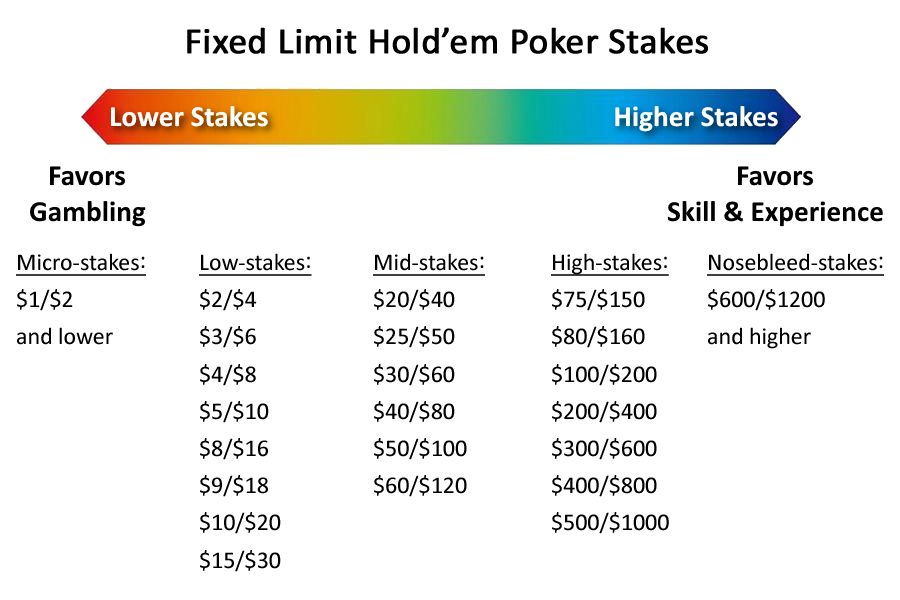
If you are playing for fun, sure by all means splash around in the micro-stakes and very low-stakes.
But if you are playing career-poker, then play as high as you can as your skill and experience and bankroll allows you. I’ve played as high as mid-stakes $30/$60 LHE and the game is dramatically different from $15/$30 LHE. I did not possess the skills to have a positive EV at $30/$60 LHE and had to stay at the $15/$30 LHE level and test the $20/$40 LHE level before moving up. If you’re playing career-poker, you always have to be testing your skills at the next level whenever you can so that it becomes your new baseline.
Las Vegas Poker Trip July 2023
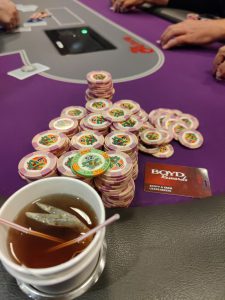
Since the question “How did you do in poker on your Vegas trip?” is going to come up, let me answer that here.
Bottom-line: I played for 19:33 hours over 3 days and overall I lost but not very much.
I played $4/$8 Limit Hold’em and had a losing rate of -$27.85 per hour.
Then I played the next higher stakes $8/$16 Limit Hold’em and had an earning rate of $44.74 per hour!
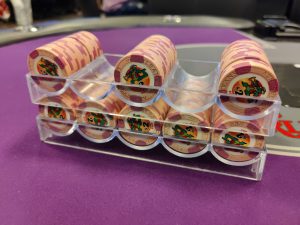
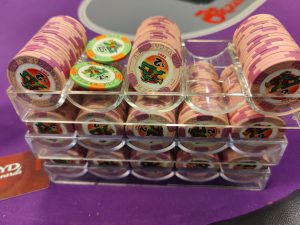
So how is it that I was losing at the lower stakes but winning at the higher stakes? See my next post What Poker Stakes Should You Play? for the reason.
Bankroll Management
For some people, poker is more than just a fun weekend game with friends — it’s a pursuit to play better and better at higher and higher stakes with a positive return. As you get better you can play for higher stakes and have it pay for itself so you can travel to play at other venues. If that’s of any interest to you, then bankroll management is essential.
*** FWIW, our Saturday poker game at this “micro-stakes” level is really just for fun and giggles and to educate on the rules and play of the game. IT IS NOT FOR BUILDING A POKER BANKROLL! LOL!
What poker bankroll management is in a nutshell, is managing your poker money wisely so that you never go completely bust even when you lose which is part of poker.
The reasons to play from a poker bankroll are:
- You never put your own money at risk. Only the bankroll is at risk
- You never have to pay your own money for travel, expenses, and tournament entries
- The effect of “scared money” when testing higher stakes is diminished
- You will play much, much better poker — like light years ahead better
There are lots of opinions for “No Bust Poker Bankroll Management”, but the way I learned is this, roughly:
- Keep track of your wins and losses!!! I’m currently using a free poker session tracker app called “Poker Ledger Bankroll Tracker” for Android
- Loan your poker bankroll seed money to start. Remember it’s a loan which means your bankroll will have to pay you back. Maybe start your loan with 20, 50, or 100 buy-ins. Just remember that your bankroll needs to pay the loan back when it can be self-sustaining
- For each session, buy-in for 20x the big bet in Fixed Limit Hold’em, or 100x the big blind in No Limit Hold’em
- Have 2 more buy-ins to reload. That’s your session limit. If you can’t win with that, then stop, it’s not your night or you’re “the fish” at the table
- Keep playing as long as you’re winning, but be ready to stop when you start losing because something changed like you got tired, sloppy, other players have figured you out, etc. I imagine my chips in front of me on a graph and I’m looking to see which way the graph is trending
- When you “book a win”, here’s how you can allocate the profit in your poker bankroll:
- 10% for travel expenses to other poker venues
- 10% for tournament entry fees
- 10% for investments, buy stocks, buy gold, pay your mortgage, etc
- 50% reinvest back into your bankroll
- 20% pay yourself! Use the cash for whatever you want (church, charity, motorcycles, vacation, etc)
- * you’ll have to allocate some for taxes when you’re getting a W-2G form from the casino
You’ll end up treating poker as a business, and you want it to be a successful business because it pays you a “salary”, invests for your future, and pays for itself to grow and expand.
This is not gospel on poker bankroll management, just some ideas and techniques to not bust and expect long-term positive returns.